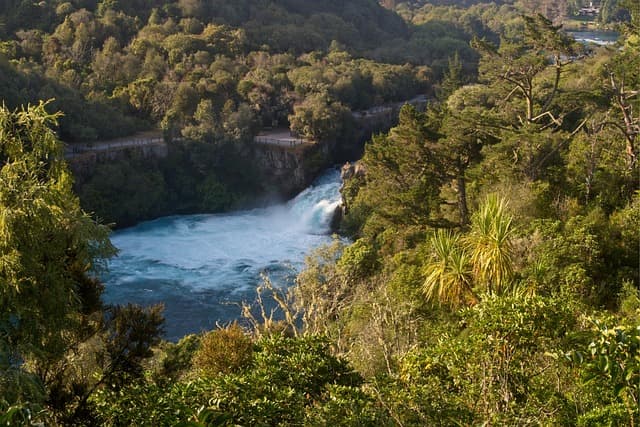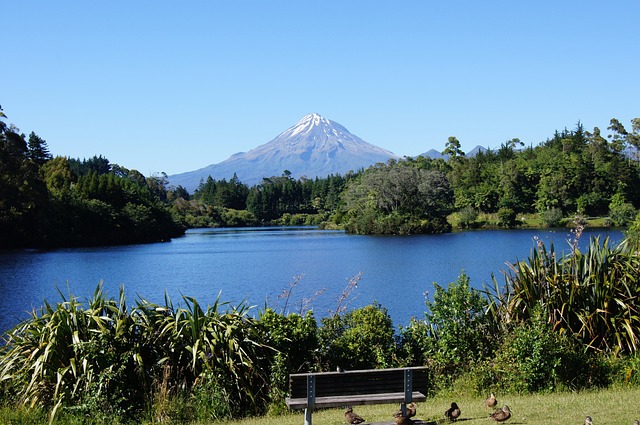Any visitor to our Hakikino Conservation Reserve will know about our eels and just how passionately we feel about protecting them and their habitat. We have recently engaged a resident eel specialist from DOC who has come to speak to us about the pressures on the New Zealand’s endemic species which is resulting in their decline. They have also assisted us with ensuring that the young eels (elvers) coming back to our pond have the best chances of survival and are able to make it into our pond safely. Our very own resident eel expert, Paddy has been very busy building a special ladder to assist in their migration.
Eels have always played an important role for Maori, and our early beliefs held that eels or tuna as we know them were a gift from the gods’. The tuna or eels also provided the Maori people with a suitable food source and these eels were once plentiful. Now, due to the pressures they face, we do not harvest any of the eels on our conservation reserve and many of us have stopped eating eels altogether.
We are incredibly fortunate to have these tuna who live up at our conservation reserve and who are only too happy to ‘show off’ for our guests. By creating an opportunity to feed our eels, we are able to share our knowledge on them and let you know what you can do to ensure the species survives. Come and learn more about our eels on one of our personal, intimate tours.
The Longfin Eel Up-Close
Appearance and Biology
The longfin eel, Anguilla dieffenbachii, is an impressive creature with a snakelike body and a striking silver belly that gradually darkens to a rich green-brown dorsally. One of the defining features of these eels is their elongated dorsal fin that runs almost the entire length of their bodies – hence the name ‘longfin.’
Measuring up to an incredible 5 feet long and weighing about 44 pounds, these eels are not just giants in their world but can claim the title quite literally – living up to 35 years in the wild. Their life cycle is one of the longest among eels, with a significant stint in the ocean before returning upstream to New Zealand rivers and lakes to breed and eventually perish. It’s this migratory pattern that makes them an intricate part of the local ecosystem and cultural history.
Catching the Tuna
Traditional Maori fishing methods employed woven flax eel traps and intricately carved eel spears to catch the ‘tuna.’ Today, the practice has evolved to include regulated harvesting techniques for sustenance and cultural ceremonies. Modern anglers looking to catch the Longfin Eel use either large crayfish or conger eel as bait, adopting ethical and sustainable fishing practices that align with the species’ significance.
The Eel on Your Plate
Culinary Delight
In New Zealand, the longfin eel holds a privileged place in Maori cuisine, revered for its rich flavor profile and the use of every part – from the creamy ‘pakirikiri’ liver to the tender flesh used in traditional stews and soups.
The eel has a texture similar to ocean-caught species, though its flavor is notably richer, boasting a palatable earthiness that takes well to smoking and slow cooking methods. Its versatility in the kitchen has garnered it a cult following among food lovers who have had the privilege to sample it.
Sustainable Harvesting Practices
Eel populations worldwide are under significant stress due to overfishing and loss of habitat. In contrast, New Zealand’s approach to longfin eel harvesting is a model of sustainability. The government regulates the fishing industry, and aquaculture enthusiasts are exploring innovative ways to breed eels in captivity, ensuring the species thrives for future generations to enjoy.
The Environmental Impact
Eels and the Ecosystem
The longfin eel’s life cycle is a complex dance with the environment. Their presence in rivers and lakes indicates a balanced ecosystem, and their migration from freshwater to the ocean is crucial in maintaining ecologic health. By feeding on a variety of marine life in the open ocean, eels constrict the population of their prey, ensuring that no single species overpopulates and disrupts the equilibrium.
Aquaculture and Conservation
Aquaculture is taking significant steps toward ensuring a steady population of longfin eels. Conservation efforts are multifaceted, involving research into and the facilitation of the eels’ natural migration patterns, the minimization of habitat interruptions, and the support of local communities in preserving the eels’ environment.
The Future of the Longfin Eel
Preserving a Local Treasure
With the global appetite for sustainable seafood growing, the longfin eel presents a unique opportunity for New Zealand to position its delicacy to the world. The challenge, however, will be in preserving the cultural integrity and ecological impact of this cherished species while meeting the increasing demand.
Looking Ahead
The future of the longfin eel, or ‘tuna,’ is an open sea of possibilities. With the right mix of conservation, aquaculture innovation, and gastronomic curiosity, this mighty eel could emerge as an exemplar of sustainable seafood practices, enriching not only the New Zealand palate but also the global culinary landscape.
In a time where ‘sustainable’ has become one of the most critical words in the food industry, the longfin eel stands as a testament to what it means to harmonize the love for food with a respect for nature.
FAQ
The longfin eel is considered sustainable due to New Zealand’s strict regulations on its fishing, efforts to cultivate eels through aquaculture, and the traditional, environmentally-conscious methods of harvesting practiced for centuries. These combined efforts ensure the species’ survival and health, making it a viable option for eco-friendly seafood.
Longfin eel is predominantly available in New Zealand due to its cultural significance and the focus on sustainable harvesting. However, with global interest in unique and sustainable seafood rising, it’s gradually finding its way into international markets and adventurous culinary scenes.
In Maori cuisine, longfin eel is revered and can be prepared in various ways, including smoking, grilling, or use in traditional dishes like stews and soups. Every part of the eel is utilized, reflecting a deep respect for the resource that this fish represents.
Yes, there are multiple conservation efforts in place to protect the longfin eel, including research into their life cycle and migration patterns, habitat preservation initiatives, and regulated fishing practices to prevent overharvesting and ensure their numbers remain stable for future generations.
The longfin eel’s unique migration pattern, from freshwater to the ocean and back, plays a crucial role in the ecosystem and its sustainability. Efforts to understand and facilitate this migration are key to their conservation, allowing them to breed and maintain their population naturally, which is vital for both the species and the environment.




